Everything you need to know about tortoiseshell Maine Coons
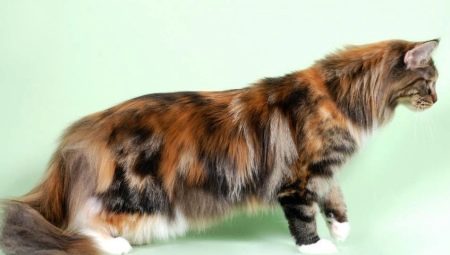
Maine Coons are one of the largest breeds of cats that are easily kept at home. They have a special appeal and always get along easily with humans and other pets. Maine Coons of tortoiseshell color look especially beautiful and elegant, which will be discussed later. In this article, we will also get acquainted with the opinion of felinologists on how to predict the birth of tortoiseshell kittens.
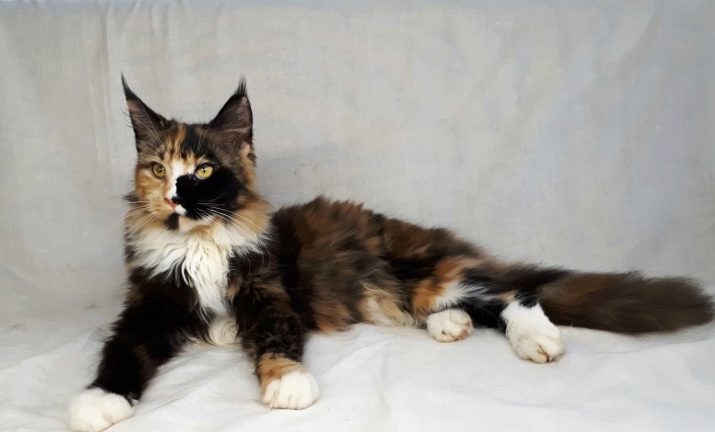
Main characteristics
Tortoiseshell kittens appear quite rarely, as this is due to complex genetic processes in the feline body. Usually tortoiseshell color means mixing two, three or more colors on the coat of a cat or cat. Speaking about the Maine Coon breed, we can safely note that dozens of original combinations and variations of color mixing on animal fur can be found in nature, but, as a rule, specks of black and red shades can be found most often. And you can also see the "turtle on white".
Most often, females are born with a tortoiseshell color. For cats, this is a serious rarity - to have such a color, as a rule, experts associate it with serious gene mutations.
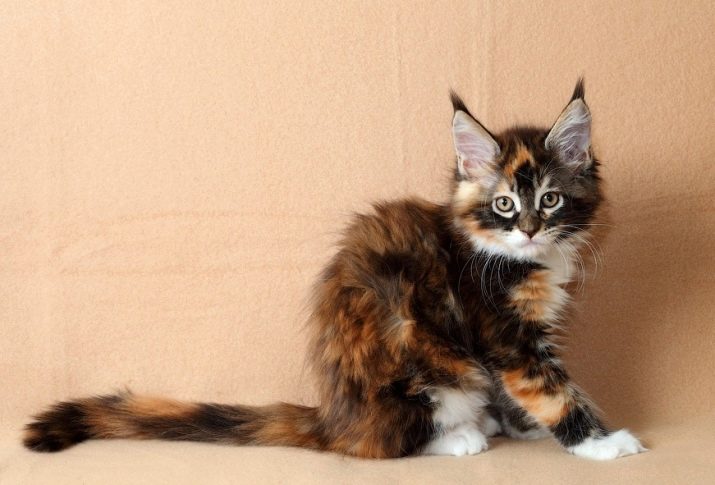
Consider the main types of tortoiseshell color.
- Classical... The classic tortoiseshell color is an alternation of orange (red) and brown shades on the fur of the animal. If the parents of Maine Coons have very beautiful hair, and a chocolate shade prevails on it, then the kittens can have a tortoiseshell color with chocolate and black spots.
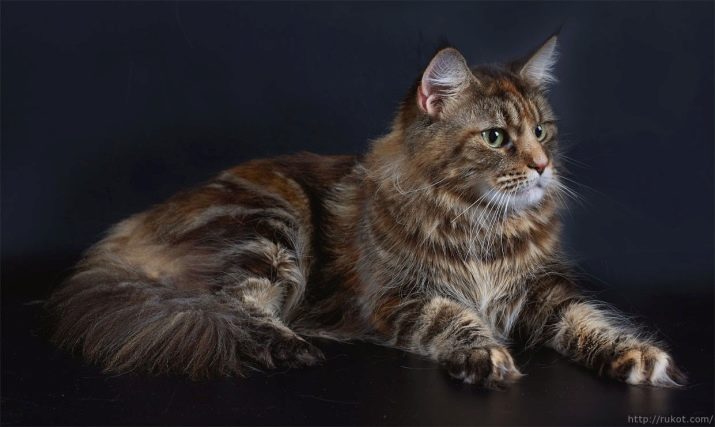
- With white... The tortoiseshell color with a predominance of white means that white spots will be especially noticeable on the legs of the animal, on the back, muzzle and abdomen. They will look contrasting with a different dark shade.
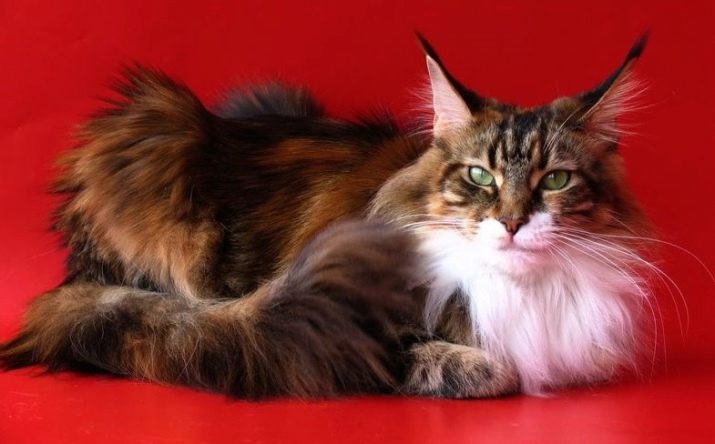
- Blue with cream... With this tortoiseshell color, the white color on the coat, as a rule, is not present, at all. But all over the cat's body, you can easily observe the alternation of dark blue and cream (milky) spots. Maine Coons of this color are considered one of the rarest in their breed. Felinologists spend more than one year to get this color. At the same time, the blue-cream female cat will be very kind and gentle in character.
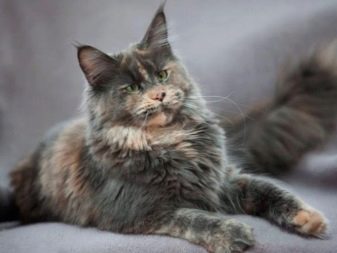

- Calico. The predominance of white, red and black colors on the coat. Obtaining this color is very common. In foreign folklore, you can find information that cats with this color bring good luck and become very attached to their owners.
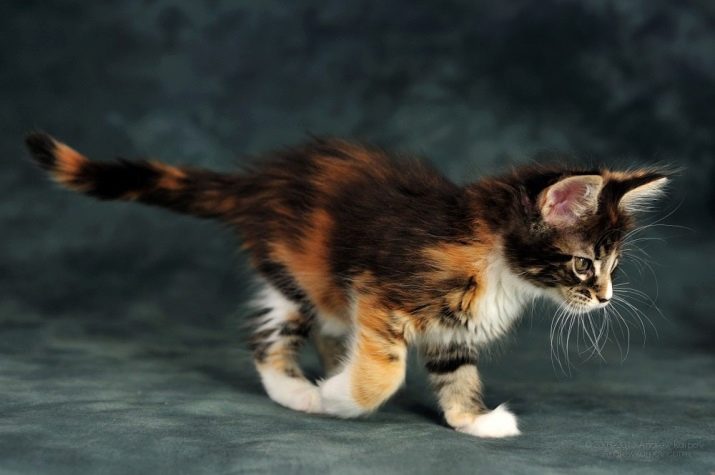
Of course, these are only general ideas about the tortoiseshell Maine Coon colors. There may be other variations in the combination of shades and colors, but in general it is important to understand that tortoiseshell color implies the presence of spots of different sizes, smoothly turning into the coat of a cat or, in rare cases, a cat.
Felinologists' predictions
Many breeders have been trying for years to get such a rare and beautiful tortoiseshell color, because you can never predict it in the next offspring with 100% certainty. And this is due to many factors.
The tortoiseshell pattern, in addition to complex genetic factors and processes, also depends on the individual characteristics of the parents, their age and the pigmentation of their coat color. It is almost impossible to predict that, for example, a tortoiseshell color with a dominance of blue and milky colors will be obtained. And it is also obvious that to get kittens with this color, you cannot knit red and black Maine Coons, even if somewhere in their pedigree there are cats or cats with this color, it is not a fact that their descendants will be such.
Drawings on the body of small kittens in the first days of life are very difficult to discern, but over time they will certainly amaze with their originality.Moreover, such kittens are most appreciated in catteries and are sold at higher prices.
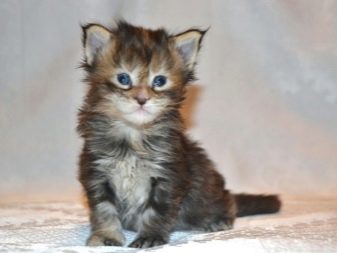
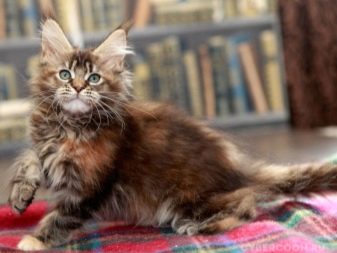
What will the kittens be like?
Each tortoiseshell color will surely have its fans. After all, how can a color with indistinct smooth transitions from one speck to another not charm. In addition, on a cat or a Maine Coon cat. Soft overflows of chocolate, black, blue and white colors will surely not leave anyone indifferent.
If the mother cat is the owner of a tortoiseshell color, then her litter will most likely contain kittens of both normal color and tortoiseshell. Calculating the color will be more difficult. After all, it can be a combination of shades of wool and a cat-mother, and a cat.
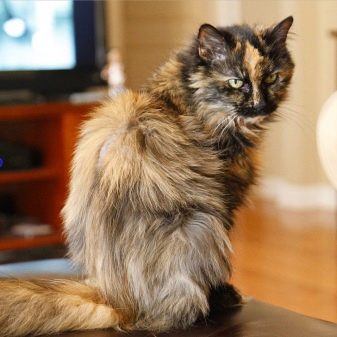

Experts believe that if the color of the coat of the intended parents of the cat and the cat is the same, then there is a high probability of getting male kittens with the same color.
To more accurately predict the color of future offspring, you will have to study not only the analysis of the dominant genes of the alleged parents, but also their closest ancestors by pedigree. And also consider the prevailing colors on the coat and their pigmentation. Of course, not all breeders are professional genetics, and therefore sometimes it's just nice to expect Maine Coon kittens without any special calculations with their original tortoiseshell color. In addition, they can appear unexpectedly, even if the parents do not have a tortoiseshell color at all.
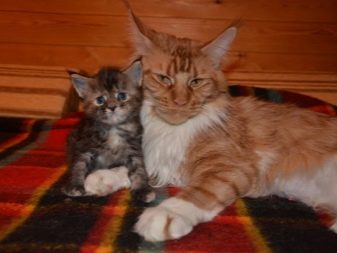
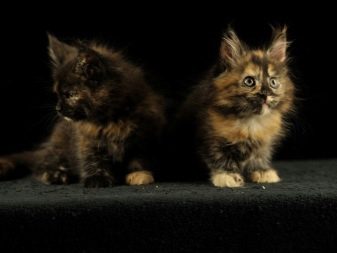
Interesting facts about Maine Coons are waiting for you in the video below.
































